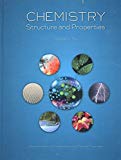
Concept explainers
Nanotechnology, the field of building ultrasmall structures one atom at a time, has progressed in recent years. One potential application of nanotechnology is the construction of artificial cells. The simplest cells would probably mimic red blood cells, the body’s oxygen transporters. Nanocontainers, perhaps constructed of carbon, could be pumped full of oxygen and injected into a person's bloodstream. If the person needed additional oxygen—due to a heart attack or for the purpose of space travel, for example—these containers could slowly release oxygen into the blood, allowing tissues that would otherwise die to remain alive. Suppose that the nanocontainers were cubic and had an edge length of 25 nanometers.
a. What is the volume of one nanocontainer? (Ignore the thickness of the nanocontainer's wall.)
b. Suppose that each nanocontainer could contain pure oxygen pressurized to a density of 85 g/L. How many grams of oxygen could be contained by each nanocontainer?
c. Air typically contains about 0.28 g of oxygen per liter. An average human inhales about 0.50 L of air per breath and takes about 20 breaths per minute. How many grams of oxygen does a human inhale per hour? (Assume two significant figures.)
d. What is the minimum number of nanocontainers that a person would need in his bloodstream to provide 1 hour's worth of oxygen?
e. What is the minimum volume occupied by the number of nanocontainers calculated in part d? Is such a volume feasible, given that total blood volume in an adult is about 5 L?
Want to see the full answer?
Check out a sample textbook solution
Chapter 2 Solutions
Chemistry: Structure and Properties Custom Edition for Rutgers University General Chemistry
- For the condensation reaction between Alamine and histamine, please help me write the amididation reaction mechanism. Then write the three letter code for the product of the reaction, then write the one letter code for the product of the reaction. arrow_forwardHow to draw the reaction mechasnism belowarrow_forwardName the following molecules with IUpacarrow_forward
- What is the molecular orbital for cyclopropenyl anion and is it aromatic, antiaromatic or nonaromatic?arrow_forwardUsing the chart describe the change from cystine to tyrosine and its impact on the protein. Using the chart describe the change from histidine to aspartic acid and its impact on the protein.arrow_forwardHow to get the predicted product of this reaction belowarrow_forward
- Please help me fill out the chart then using the chart describe the change from cystine to tyrosine and its impact on the protein. Then using the chart describe the change from histidine to aspartic acid.arrow_forwardWrite the Esterification reaction mechanism for acetic acid, and one propanol to make propanol ethanoate (molecule that gives peas its odor in flavor)arrow_forwardProvide solutionsarrow_forward
 World of Chemistry, 3rd editionChemistryISBN:9781133109655Author:Steven S. Zumdahl, Susan L. Zumdahl, Donald J. DeCostePublisher:Brooks / Cole / Cengage Learning
World of Chemistry, 3rd editionChemistryISBN:9781133109655Author:Steven S. Zumdahl, Susan L. Zumdahl, Donald J. DeCostePublisher:Brooks / Cole / Cengage Learning Chemistry: The Molecular ScienceChemistryISBN:9781285199047Author:John W. Moore, Conrad L. StanitskiPublisher:Cengage Learning
Chemistry: The Molecular ScienceChemistryISBN:9781285199047Author:John W. Moore, Conrad L. StanitskiPublisher:Cengage Learning Introductory Chemistry: A FoundationChemistryISBN:9781337399425Author:Steven S. Zumdahl, Donald J. DeCostePublisher:Cengage Learning
Introductory Chemistry: A FoundationChemistryISBN:9781337399425Author:Steven S. Zumdahl, Donald J. DeCostePublisher:Cengage Learning General Chemistry - Standalone book (MindTap Cour...ChemistryISBN:9781305580343Author:Steven D. Gammon, Ebbing, Darrell Ebbing, Steven D., Darrell; Gammon, Darrell Ebbing; Steven D. Gammon, Darrell D.; Gammon, Ebbing; Steven D. Gammon; DarrellPublisher:Cengage Learning
General Chemistry - Standalone book (MindTap Cour...ChemistryISBN:9781305580343Author:Steven D. Gammon, Ebbing, Darrell Ebbing, Steven D., Darrell; Gammon, Darrell Ebbing; Steven D. Gammon, Darrell D.; Gammon, Ebbing; Steven D. Gammon; DarrellPublisher:Cengage Learning Chemistry for Engineering StudentsChemistryISBN:9781337398909Author:Lawrence S. Brown, Tom HolmePublisher:Cengage Learning
Chemistry for Engineering StudentsChemistryISBN:9781337398909Author:Lawrence S. Brown, Tom HolmePublisher:Cengage Learning ChemistryChemistryISBN:9781305957404Author:Steven S. Zumdahl, Susan A. Zumdahl, Donald J. DeCostePublisher:Cengage Learning
ChemistryChemistryISBN:9781305957404Author:Steven S. Zumdahl, Susan A. Zumdahl, Donald J. DeCostePublisher:Cengage Learning





